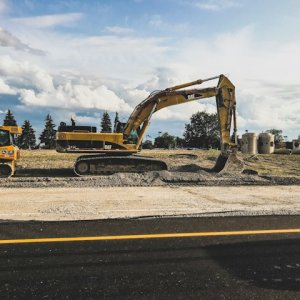
Results Pending on Mexico City-Toluca Interurban Train Tender
 By Fernando Mares | Journalist & Industry Analyst -
Tue, 04/05/2022 - 12:18
By Fernando Mares | Journalist & Industry Analyst -
Tue, 04/05/2022 - 12:18
The Mexico City government launched a new tender for the construction of further works for the Mexico City-Toluca Interurban Train, which includes an elevated viaduct, a station and a terminal. The federal government signed an agreement to reallocate up to US$47.8 million from the Ministry of Infrastructure, Communications, and Transportation (SICT) to the Mexico City government for the construction of these three works.
The tender considers a dual carriageway elevated viaduct that will start from the tunnel exit of the Mexico-Toluca highway; a station in Santa Fe with four levels, an access building and two pedestrian passages and a terminal-tunnel in Observatorio, near the metro station with the same name. The tender results should have been announced on March 22 to start construction on April 1. However, no official information has been released.
Among the interested companies are Contrucciones Nycpza, Concretos Cayetano and Alvarga Contructciones. Other participant companies are Idinsa (which is involved in connectivity projects for the federal government’s major projects, including the Dos Bocas refinery), Prodemex, and Aldesem. According to Víctor Ortiz, President, Idinsa, the federal government is “a good but demanding payer” in terms of timeframes.
The government’s top priority is to finish infrastructure projects before Andrés Manuel López Obrador’s term ends. The Mexico City-Toluca Interurban Train will run across 57.87 km (4.7km of them will be a tunnel). It will have two terminals (Zinacatepec and Observatorio) and four intermediate stations (Pino Suarez, Tecnologico, and Lerma in the Stare of Mexico and Santa Fe in Mexico City).
The project is expected to have 30 trains with five wagons and it will move over 230,000 passengers every day once it is fully operational. This will help to reduce more than 27 tons of CO2 emissions every year. The project is also expected to reduce travel times by 90 minutes for a roundtrip and to avoid approximately 400 car accidents a year by also addressing constant traffic problems on the highway.
The project started in January 2015 during former President Enrique Peña Nieto’s term. It was later stopped and then re-started by AMLO’s administration, but it faced rights of way and structural challenges. The train is scheduled to be inaugurated by the end of 2023, six years after the date Peña Nieto’s administration had set.
















